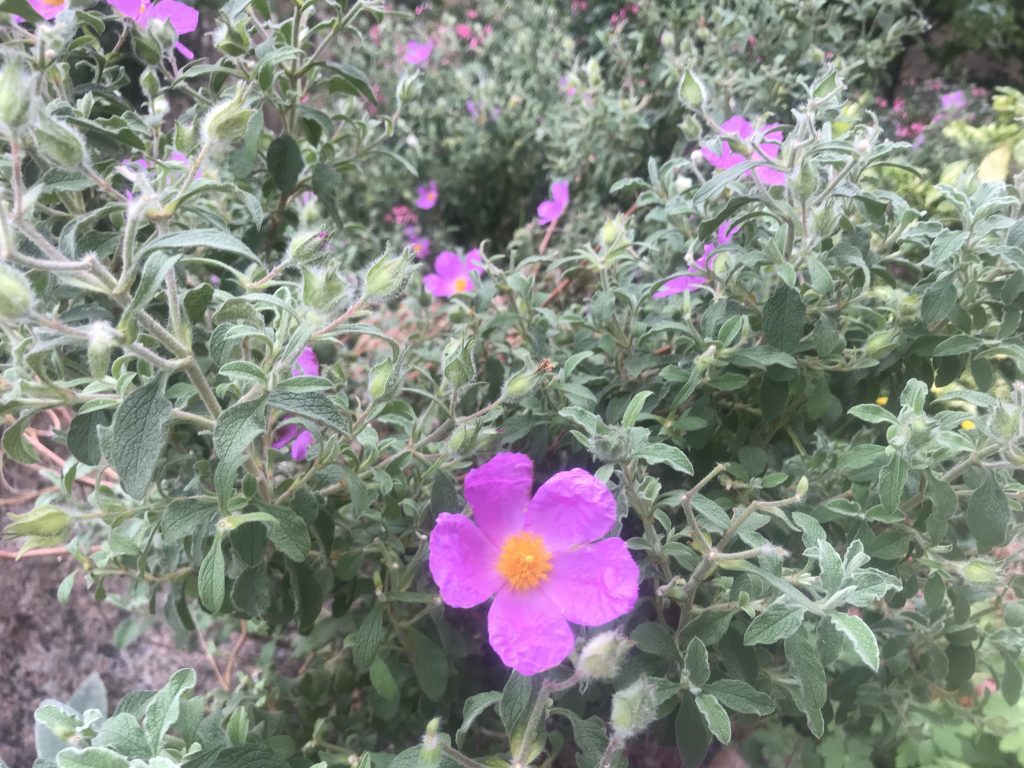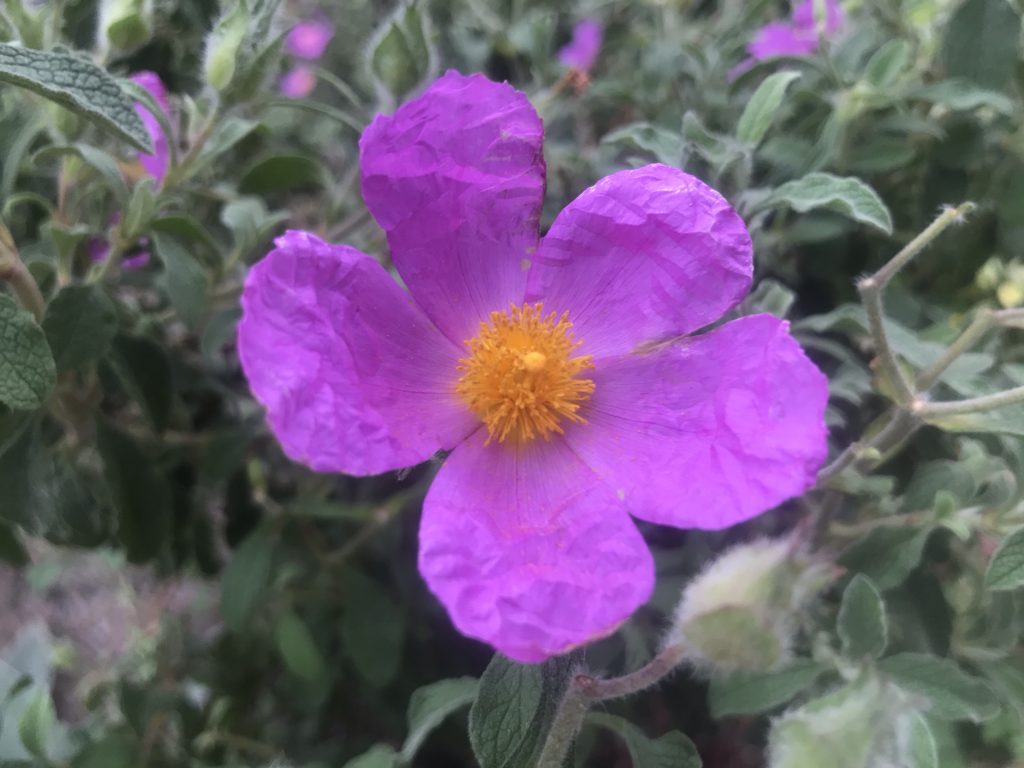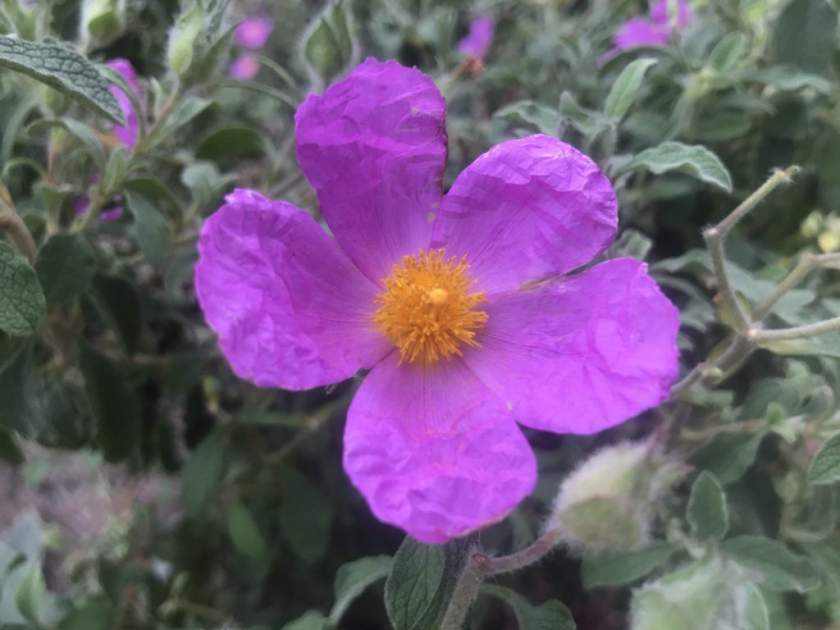Cistus albidus: The White-leaved Rock Rose
Background and Characteristics: Cistus albidus, commonly known as White-leaved Rock Rose, belongs to the Cistaceae family of plants. Native to the Mediterranean basin, this evergreen shrub is recognized for its distinctive white or grayish foliage and delicate, 5-petalled flowers. The flowers, which bloom from March to July, display a range of colors including white, pink, and purple, with thin petals resembling slightly wrinkled paper and a vibrant yellow center.
Description and Habitat: Cistus albidus typically reaches a height of 1.5 meters or 5 feet, although most plants observed are around 2 to 3 feet tall. The shrub thrives in full sun exposure and exhibits excellent tolerance to various soil types, including poor or fertile soil and even lime-rich soil. It is commonly planted in borders, slopes, or rock gardens, adding vibrant colors and visual interest to the landscape. Cistus albidus is known for its drought tolerance and overall ease of cultivation.
Cultivation of Cistus albidus:
Sunlight: White-leaved rock rose flourishes in full sun, although it can tolerate some shade. However, for the most abundant flower production, choose a location that receives ample sunlight. In hot, dry climates, providing morning sun and afternoon shade can help protect the plant from excessive heat.
Soil and Drainage: Cistus albidus prefers well-drained soil and benefits from amending the soil with compost or manure before planting. This enhances both the drainage and fertility of the soil, creating an optimal growing environment.
Planting: White-leaved rock rose can be planted in either spring or fall. Space the plants 2-3 feet apart to allow for proper growth and development. If planting multiple plants, creating a planting plan ensures a well-organized and visually pleasing arrangement.
Watering: While drought-tolerant once established, Cistus albidus requires regular watering during the first year after planting. Water deeply to ensure the moisture reaches the roots, but allow the soil to dry out slightly between waterings to prevent overwatering and root issues.
Fertilizing: White-leaved rock rose generally does not require frequent fertilization. Applying a balanced slow-release fertilizer once a year in the spring, such as a 10-10-10 fertilizer, provides essential nutrients for healthy growth. Avoid excessive nitrogen fertilizers, as they can promote excessive foliage growth at the expense of flower production.
Pests and Diseases: White-leaved rock rose is generally resilient against pests and diseases. However, keep an eye out for aphids, scale insects, and powdery mildew. If any signs of pests or diseases are observed, promptly treat the plant with appropriate pesticides or fungicides.
Pruning:
Pruning Cistus albidus is not often necessary. In the spring, remove any dead or damaged growth to maintain the plant’s health and appearance. If desired, pruning can be done in the spring or fall to promote a compact form.
Mulch: Applying a 2-3 inch layer of mulch around the plant helps retain moisture in the soil and suppresses weed growth. This mulching technique provides additional protection and support for the plant’s overall health.
Deadheading: Removing spent blooms, or deadheading, encourages more prolific flowering. Simply pinch off the faded flowers using your fingers to stimulate new growth and prolong the blooming period.

Propagation:
Cistus albidus can be propagated through either seeds or cuttings. While seed germination can be irregular, cuttings are often recommended for more reliable results. Take 4-6 inch cuttings from healthy, non-flowering stems during the spring or summer. Dip the cut ends in rooting hormone and plant them in a well-drained potting mix. Keep the potting mix moist and the cuttings in a warm, bright location. Rooting should take 4-6 weeks.
Winter Protection: If you live in a cold climate, you may need to protect Cistus albidus from winter cold. You can do this by covering the plant with a burlap sack or other protective material. This helps to insulate the plant and shield it from harsh winter conditions.





